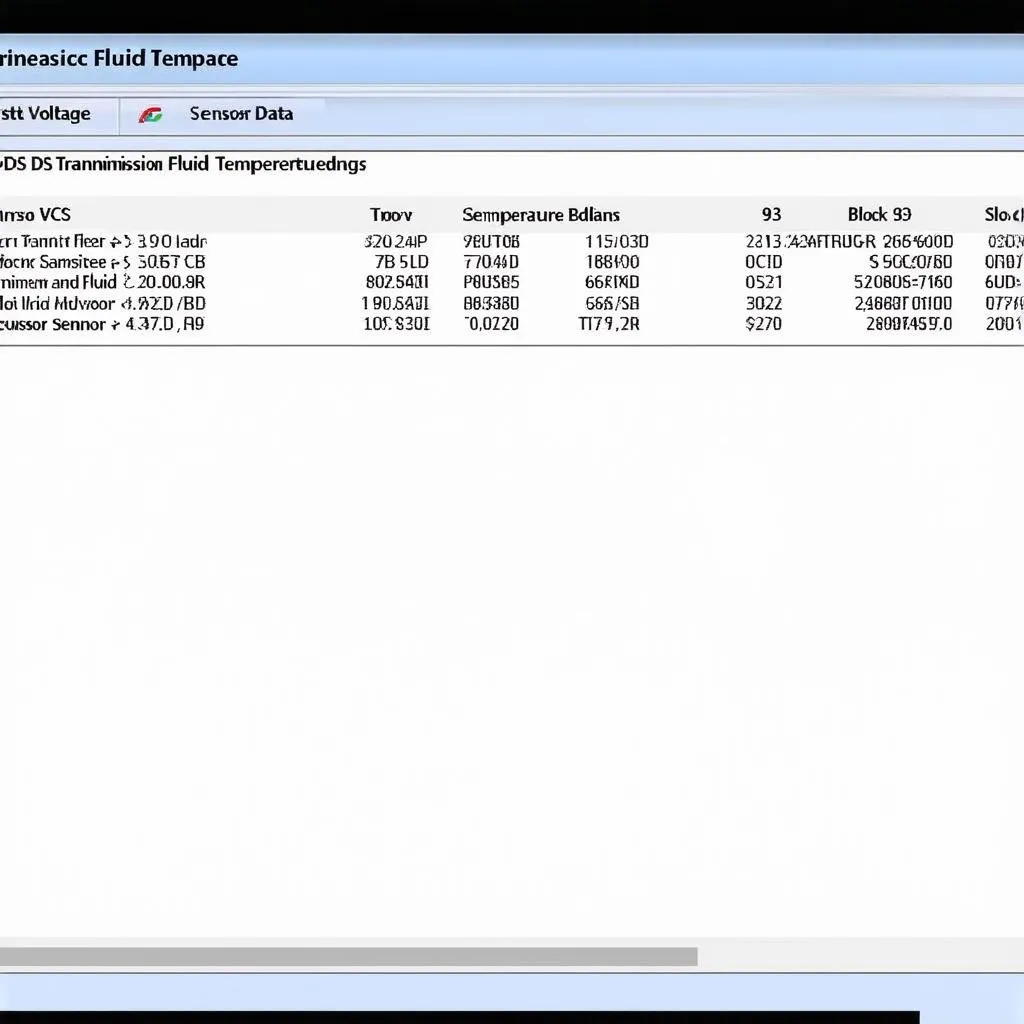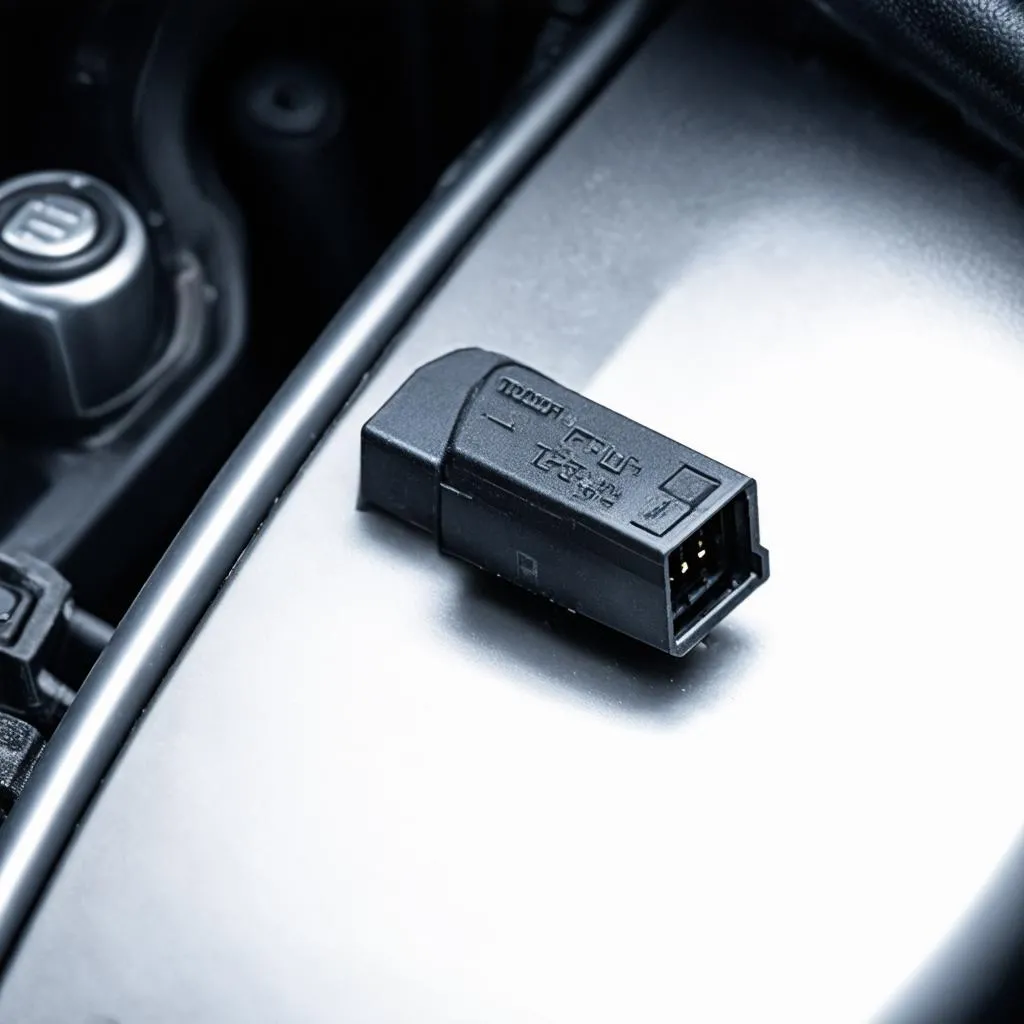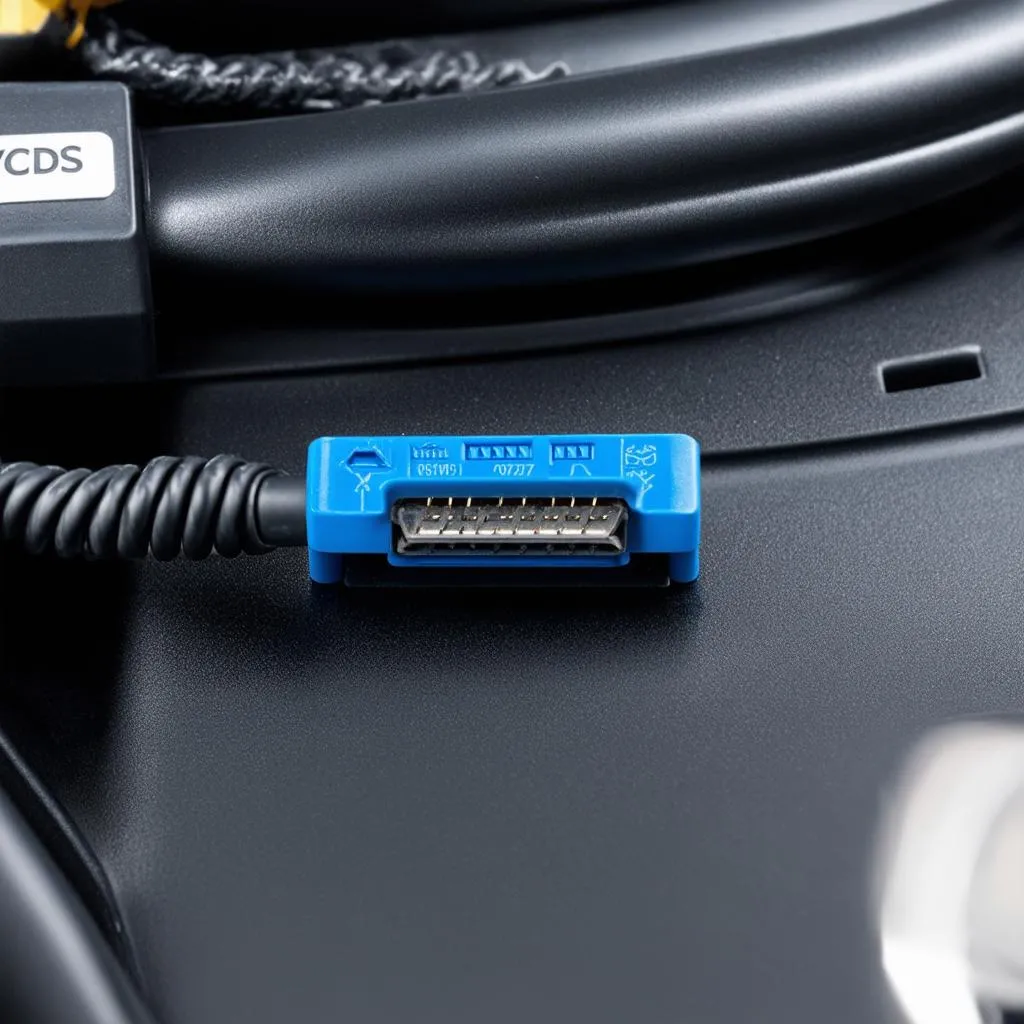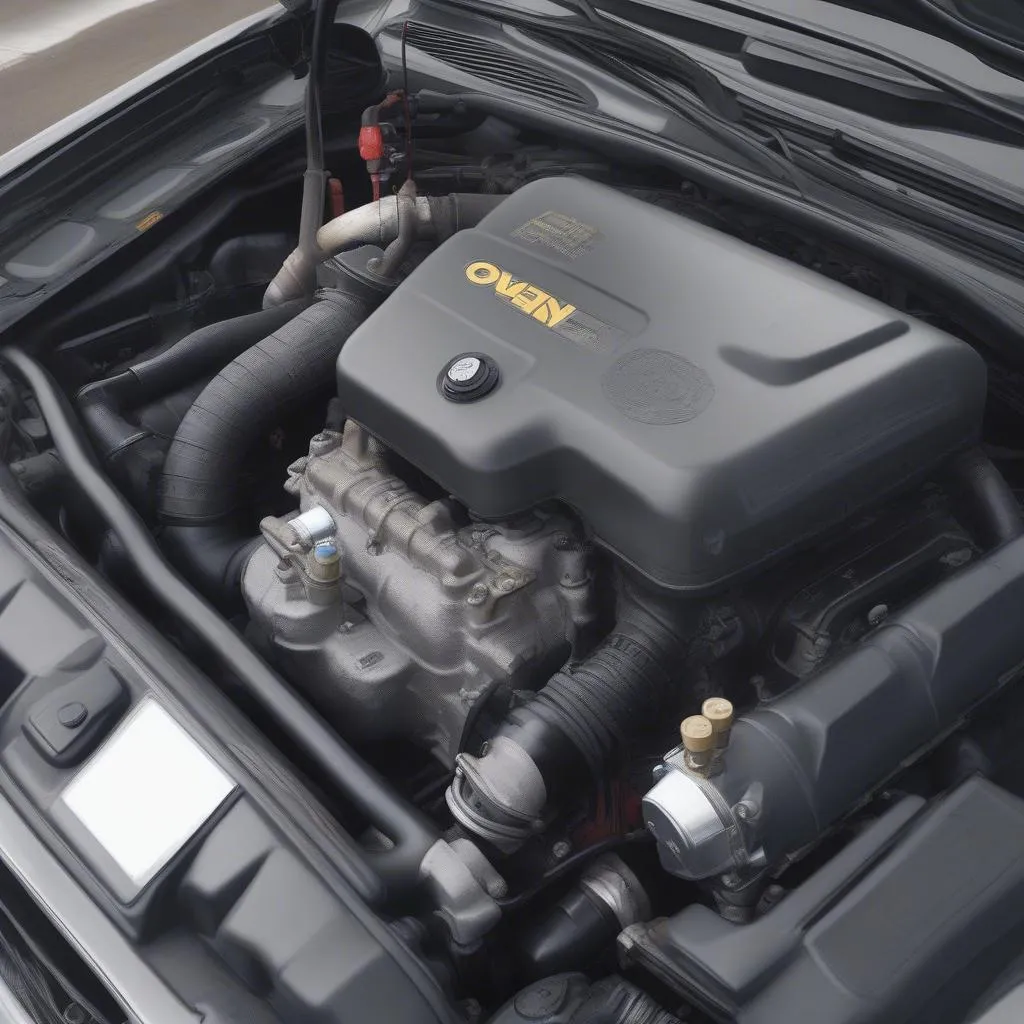VCDS, formerly known as VAG-COM, is a powerful diagnostic software used by automotive professionals and enthusiasts to troubleshoot and analyze the electronic systems of Volkswagen, Audi, Seat, and Skoda vehicles. It allows access to various control modules within the vehicle, each containing data-rich blocks that provide insights into the vehicle’s performance. Among these, Block 93 holds particular significance for those seeking to diagnose and understand issues related to the automatic transmission system in these vehicles.
“Understanding Block 93 in VCDS is like having a direct line to your car’s transmission control unit,” says automotive electronics expert, David Miller, author of “Advanced Automotive Diagnostics”. “It gives you a window into how the transmission is operating, helping you identify potential problems before they become major headaches.”
Decoding the Data in Block 93
Block 93 primarily displays live data related to the automatic transmission fluid temperature sensor (TFT). This information is crucial for assessing the health and performance of the transmission.
Here’s a breakdown of the key data points you’ll find in Block 93:
- Transmission Fluid Temperature (TFT): This is the most crucial value displayed in Block 93, indicating the current temperature of the transmission fluid. Maintaining the optimal fluid temperature is vital for the longevity and smooth operation of the transmission.
- Sensor Voltage: This value represents the voltage signal being sent from the TFT sensor to the transmission control module (TCM). Monitoring this voltage can help identify a faulty sensor or wiring issue.
Common Issues Revealed by Block 93
Analyzing the data from Block 93 can provide valuable insights into various transmission-related problems.
Here are some common issues that Block 93 can help diagnose:
- Overheating Transmission: If the TFT consistently shows excessively high temperatures, it could indicate a failing transmission cooler, low fluid levels, or even internal transmission damage.
- Faulty TFT Sensor: Inaccurate or erratic temperature readings, along with unusual sensor voltage values, often point to a malfunctioning TFT sensor.
- Wiring Problems: Fluctuating TFT readings or a complete lack of signal may suggest wiring issues between the sensor and the TCM.
Utilizing Block 93 for Troubleshooting
Knowing how to interpret Block 93 data is essential for effective troubleshooting. Here’s a step-by-step guide:
- Connect VCDS: Connect your VCDS interface to the vehicle’s OBD-II port and launch the software.
- Access Transmission Module: Select the “Automatic Transmission” module within VCDS.
- Navigate to Block 93: Go to “Measuring Blocks” and enter “093” to access Block 93.
- Monitor Live Data: Observe the TFT and sensor voltage values in real-time, paying attention to any fluctuations or inconsistencies.
- Compare with Specifications: Refer to the vehicle’s service manual for the acceptable TFT range and compare it with the readings obtained from Block 93.
- Analyze and Diagnose: Based on your observations and comparisons, you can pinpoint potential issues related to the transmission fluid temperature sensor, wiring, or the transmission itself.
Precautions and Considerations
While Block 93 is a valuable tool for diagnostics, it’s crucial to remember that it doesn’t provide the complete picture of your transmission’s health.
Here are some essential precautions to keep in mind:
- Consult Factory Service Manuals: Always refer to the vehicle-specific factory service manual for accurate interpretation of data and troubleshooting procedures.
- Professional Expertise: If you’re unsure about any aspect of the diagnosis, it’s always best to consult a qualified automotive technician for a comprehensive assessment.
FAQs about Interpreting Block 93 in VCDS
Q: What should I do if the TFT reading in Block 93 is significantly higher than normal?
A: A high TFT reading could indicate a serious issue. Stop driving immediately, allow the transmission to cool down, and check the transmission fluid level. If the issue persists, seek professional help.
Q: Can a faulty TFT sensor cause the transmission to malfunction?
A: While a faulty sensor itself may not directly cause transmission failure, it can lead to improper shifting patterns and potential long-term damage if ignored.
Q: Can I rely solely on Block 93 data to diagnose complex transmission problems?
A: While Block 93 provides valuable insights, complex transmission issues may require a combination of diagnostic procedures, including further analysis using VCDS, mechanical inspection, and potentially a transmission fluid analysis.
 VCDS Block 93 Screenshot
VCDS Block 93 Screenshot
 Transmission Fluid Temperature Sensor
Transmission Fluid Temperature Sensor
Need More Help with Your Vehicle Diagnostics?
For more in-depth support with your automotive diagnostics and access to high-quality diagnostic tools, visit CARDIAGTECH. We offer a wide range of professional-grade diagnostic equipment and expert advice to help you keep your vehicles running smoothly.


